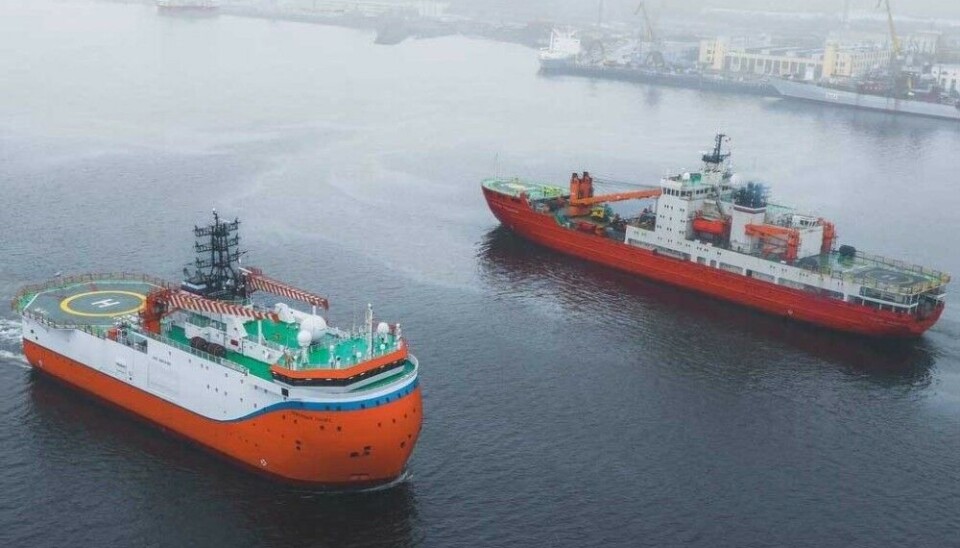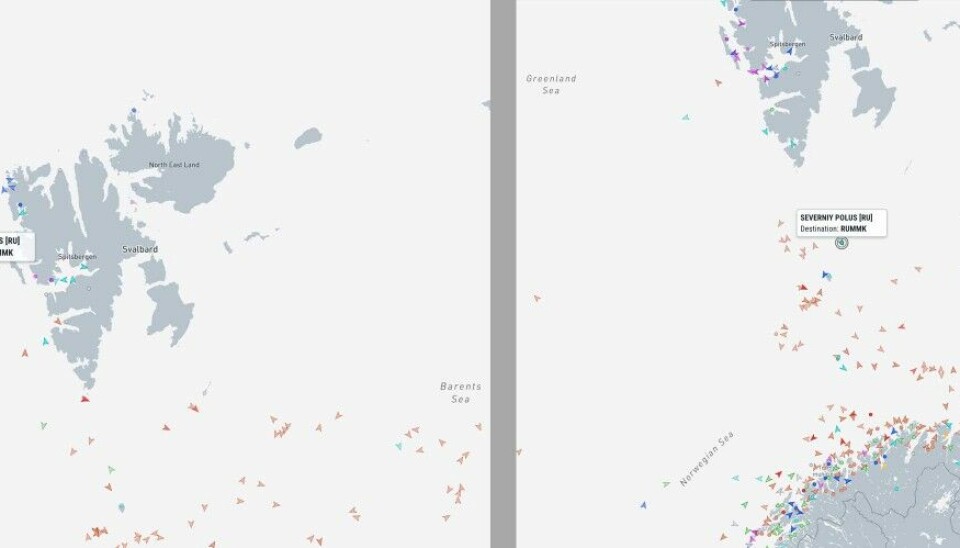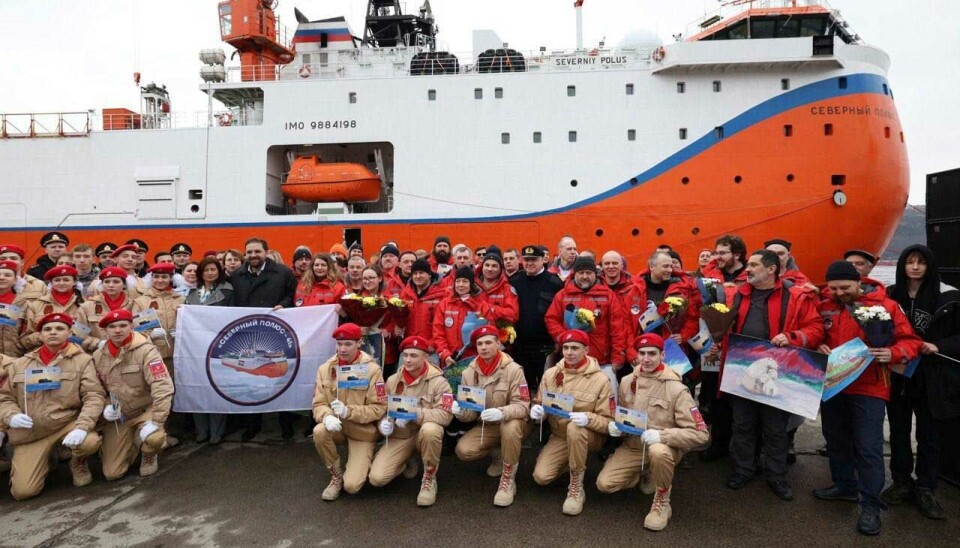
Russia says its North Pole platform is key to understanding climate change
But the floating Arctic research station can also be used for mapping of the seabed and underwater infrastructure, and serve as base for covert security operations.
The Severny Polyus on the 17th of May sailed into the Kola Bay and made port call in Murmansk. The 83 meter long ship that has the shape of a bathtub had been at sea for 20 months, most of the time in the remotest waters of the Arctic.
Since it set out from St.Petersburg in early September 2022, the Severny Polyus (“North Pole”) has drifted more than 3,000 nautical miles through the sea-ice from the East Siberian Sea to the Greenland Sea. On board has been a crew of 16 and a research team of 34.
The ship in late April made it out of the ice north of Svalbard and in early May sailed southwards. On the 10th of May it was located to the west of the Ice Fjord at Svalbard and shortly later made it to the waters north of the Bear Island. For unclear reasons, the vessel for several days stayed in the waters of the Bear Island before it proceeded towards Murmansk.

It has not been an expedition without complications. In June 2023, Norwegian authorities assisted the Russians in an emergency rescue operation of a seriously ill crew member. A Super Puma AWSAR helicopter took off from Svalbard and successfully made it to the site of the platform at 86 degrees North and picked up the patient.
The following month, a Russian ice-class ship arrived on site with new crew members and supplies after a 6,000 km voyage from St.Petersburg.

According to Russian Minister of Natural Resources Aleksandr Kozlov, the Severny Polyus offers Russia unique insights into the Arctic.
«With the start of the operations of the self-propelled and ice-protected platform Russia has gotten the possibility to undertake long-term scientific experiments on high altitudes,» Kozlov said in a comment delivered in connection with the arrival of the Severny Polyus in Murmansk.
«The researchers have access to 50 types of research work: from meteorology to geophysics, glaciology, seismology and aerology. The data will form the basis for understanding of climate change and climate prognosis, development of climate adaptation measures, they are important for providing security to shipping on the Northern Sea Route,» he explained.

Kozlov has been Minister of Natural Resources since year 2000 and was reappointed in May 2024. He has also been closely engaged in natural resource cooperation with several foreign countries, among them China and North Korea.
Among the researchers represented onboard the Severny Polyus were geologists from Russia’s shelf exploration institute VNIIOkeangeologia. In the course of the 20 month expedition, the geologists took a number of samples from the Arctic seabed. The samples will be used as part of Russia’s efforts to expand its borders on the Arctic shelf, representatives of the expedition say.
The Severny Polyus is designed to be able to autonomously drift through Arctic sea-ice for up to two years. On board are 15 labs where researchers can work year-round.
The ship is operated by Russia’s meteorological service Roshydromet. Captain on board is Sergei Nesterov, an experienced sailer with experiences from both Arctic and Antarctica waters, including for foreign tourist cruise companies like Quark Expeditions.
The research platform has replaced Russia’s Arctic expeditions based on ice floes organised since the 1930s. The quickly vanishing Arctic sea-ice made it increasingly hard to organise the expeditions and the last real ice station, the “North Pole-40”, was held in the winter of 2012.
Albeit built for research purposes, the Severny Polyus could ultimately also be applied by the Russian military. The country’s new Marine Doctrine includes a high stress on use of civilian ships and infrastructure for military purposes. That could include not only trawler and icebreakers, but also the Severniy Polus.















